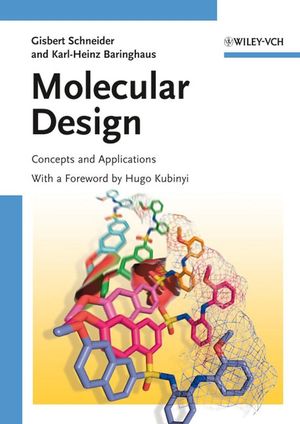Molecular Design: Concepts and ApplicationsISBN: 978-3-527-31432-4
Paperback
277 pages
February 2008
 |
||||||
This first introductory-level textbook on the design of small molecules is written with the first-time user in mind. Aimed at students and scientists alike, it uses computer-based methods to design and analyze such small molecules as drugs, enzyme inhibitors, probes and markers for biomolecules. Both authors have extensive practical experience of modeling and design and share their knowledge of what can and cannot be done with computer-assisted design.
Divided into four sections, the book begins with a look at molecular objects and design objectives, including molecular geometry, properties, recognition and dynamics. Two further sections deal with virtual synthesis and screening, while the final section covers navigation in chemical space.
The result is a textbook that takes the modeler one step further, to the de novo design of functional molecules. With its study questions at the end of each learning unit, this is equally suitable for teaching and self-learning.
Divided into four sections, the book begins with a look at molecular objects and design objectives, including molecular geometry, properties, recognition and dynamics. Two further sections deal with virtual synthesis and screening, while the final section covers navigation in chemical space.
The result is a textbook that takes the modeler one step further, to the de novo design of functional molecules. With its study questions at the end of each learning unit, this is equally suitable for teaching and self-learning.



